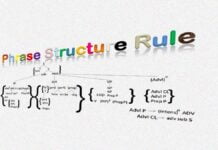Reading strategies can be developed and improved over time, helping individuals become more efficient and critical readers. It is essential in academic contexts where reading comprehension is fundamental for success in learning and research.
There are different reading modes, and each of them has its peculiarities. They are classified by the degree of involvement — active and passive. The various modes of reading are:
- Loud Reading
- Silent Reading
- Intensive Reading
- Extensive Reading
- Skimming
- Scanning
Loud Reading
Loud reading is oral reading. In second language learning, loud reading should start a few months after starting oral work. Loud reading is meant to mend the defects in pronunciation, articulation and stress and to bring them to the proper nature of the language. It is to guide the learners to read with comprehension with increasing speed. After acquiring skills in loud reading, the learners gradually move from it to silent reading.
Silent Reading
It is the most effective type of reading because it has long-term effects and can be used to acquire knowledge and understanding in all walks of life. Text material in print is the basis for silent reading. Eye movements are based on difficult points rather than on punctuation marks. Speech organs are at rest; the eye is the chief sense organ.
Intensive Reading
Typically, this type of reading is used in the study of English to parse the proposed short, teaching text intensively. With this type of reading, grammatical constructions, unfamiliar words and phrases are intensively examined. The learner needs to have clear aims in mind when undertaking intensive reading. If he needs to list the chronology of events in a long passage, he must read it intensively. This type of reading has benefited language learners as it helps them understand vocabulary by deducing the meaning of words in a context. It, moreover, helps with the retention of information for an extended period, and knowledge resulting from intensive reading persists in one’s long-term memory.
Extensive Reading
Extensive reading involves reading for pleasure. This type of reading aims to get acquainted with new information. In this mode, people read the art or scientific literature without being distracted by new, unfamiliar words if their meaning can be approximately understood from the context. This type of reading implies mastering the general image and receiving further unknown information. Forming and expressing one’s opinion about what you read or answering the questions will be necessary.
Skimming
Skimming is sometimes referred to as gist reading. This reading mode is used to learn and understand if this information is helpful to you. The text is also viewed quickly but less carefully than in the previous case. The goal is not to search for specific facts but to evaluate the text for complexity, interest and a general storyline. Skimming may help to know what the text is about at its most basic level. Comprehension could be higher, and understanding of overall content could be more superficial.
Scanning
Scanning involves getting your eyes to scuttle across sentences quickly and is used to get just a simple piece of information. This reading mode only aims to find the information required in the text. It does not mean a complete immersion in the text, a deep comprehension of the facts, and an analysis of grammatical constructions. Often, in this mode, the text is viewed for the presence of unfamiliar words so that after their translation, it will be easier to read the text thoroughly. This type of reading is also called diagonal reading. Interestingly, research has concluded that reading off a computer screen inhibits the pathways to effective scanning, and thus, reading the paper is far more conducive to speedy comprehension of texts.





























